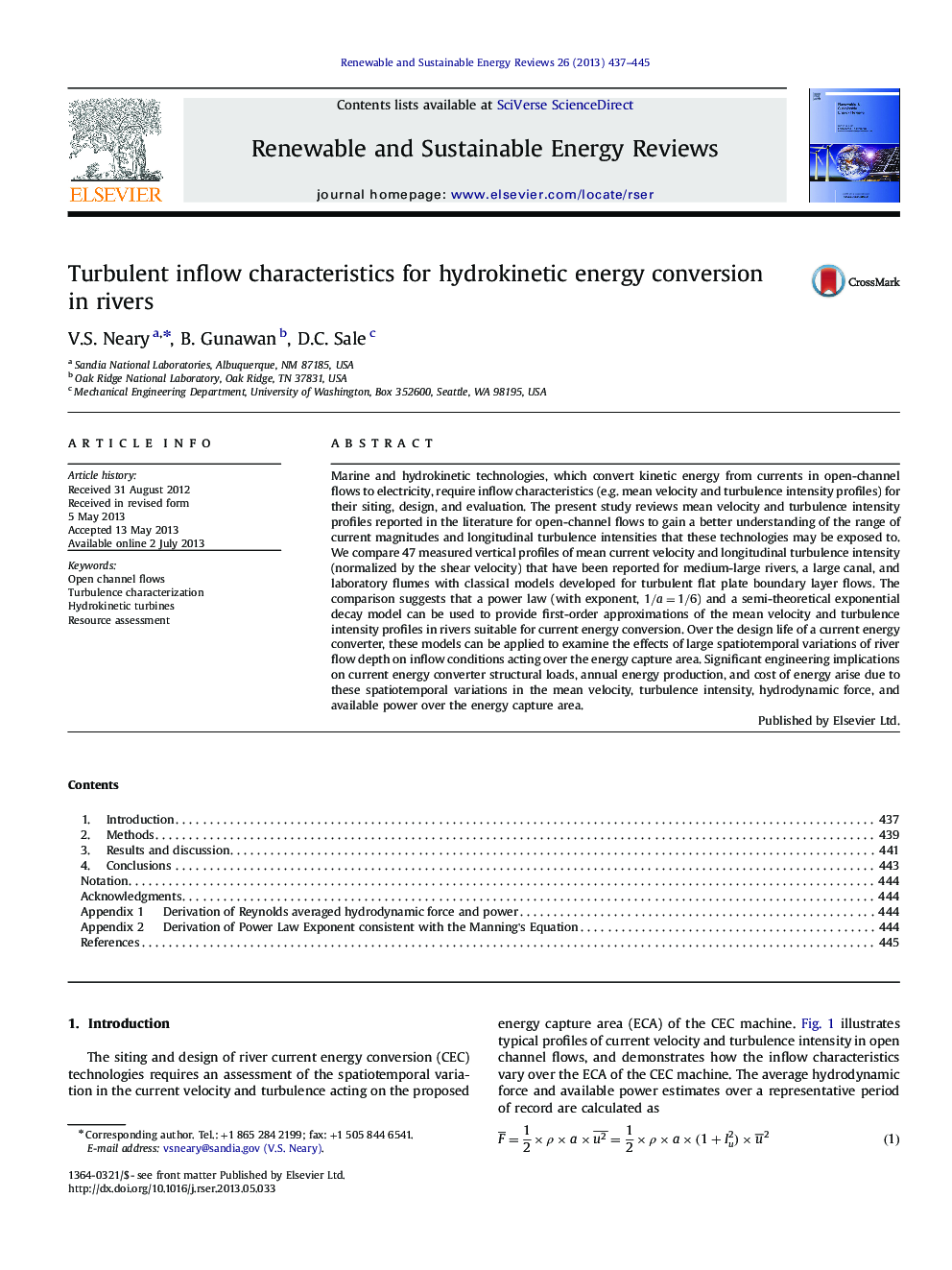| Article ID | Journal | Published Year | Pages | File Type |
|---|---|---|---|---|
| 8121582 | Renewable and Sustainable Energy Reviews | 2013 | 9 Pages |
Abstract
Marine and hydrokinetic technologies, which convert kinetic energy from currents in open-channel flows to electricity, require inflow characteristics (e.g. mean velocity and turbulence intensity profiles) for their siting, design, and evaluation. The present study reviews mean velocity and turbulence intensity profiles reported in the literature for open-channel flows to gain a better understanding of the range of current magnitudes and longitudinal turbulence intensities that these technologies may be exposed to. We compare 47 measured vertical profiles of mean current velocity and longitudinal turbulence intensity (normalized by the shear velocity) that have been reported for medium-large rivers, a large canal, and laboratory flumes with classical models developed for turbulent flat plate boundary layer flows. The comparison suggests that a power law (with exponent, 1/a=1/6) and a semi-theoretical exponential decay model can be used to provide first-order approximations of the mean velocity and turbulence intensity profiles in rivers suitable for current energy conversion. Over the design life of a current energy converter, these models can be applied to examine the effects of large spatiotemporal variations of river flow depth on inflow conditions acting over the energy capture area. Significant engineering implications on current energy converter structural loads, annual energy production, and cost of energy arise due to these spatiotemporal variations in the mean velocity, turbulence intensity, hydrodynamic force, and available power over the energy capture area.
Related Topics
Physical Sciences and Engineering
Energy
Renewable Energy, Sustainability and the Environment
Authors
V.S. Neary, B. Gunawan, D.C. Sale,
